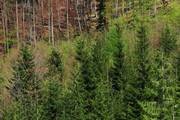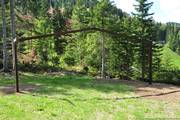Further steps for the establishment of the Memorial Loibl-North
10.06.2016
When the Loibl Pass Tunnel at the Carinthian-Slovenian border was built from 1943 to 1945, thousands of concentration camp prisoners from Mauthausen were employed as workforce. In camps at the southern and northern sides (Loibl North and Loibl South) of the Loibl Pass, up to 1,300 prisoners were being detained during that time. During 1943 and 1945, numerous concentration camp prisoners died here. In May 1945, the prisoners were liberated during an evacuation march by a Partisan attack.
Since 2007, the Federal Ministry of the Interior has endeavoured to establish a Memorial Loibl North at the Austrian side of the Loibl Pass. For this purpose, the former concentration camp area was leased, cleared, and information boards were being erected. Subsequently, the concept of a “living memorial” was created in 2009 in collaboration with Prof. Dr. Peter Gstettner from the Mauthausen Committee Carinthia/Koroška. The concept defined the necessary steps to be taken for establishing a memorial, showing the extent of the former concentration camp and indicating the location of the barracks.
Since 2014, there has been close cooperation with the Province of Carinthia, the Austrian Federal Monuments Office and the Mauthausen Committee Carinthia for implementing the first steps of the memorial concept. By steel gable structures, designed and planned by Ms Ute Bauer-Wassmann, the location of the former concentration camp barracks will be visualised. They are not supposed to constitute reconstructions of the barracks, but shall be visual aids for the visitors. By its special grey and rusty colours, the concepts will work both during winter and summer months.
Further steps shall be taken. They will also include the integration of existing foundation remains, such as the former lavatory station, which at present is still temporarily encased, into the future design of the new Concentration Camp Memorial.

